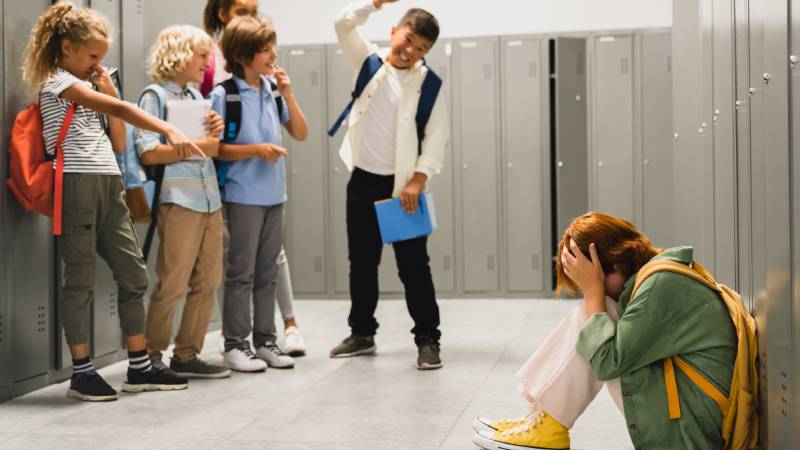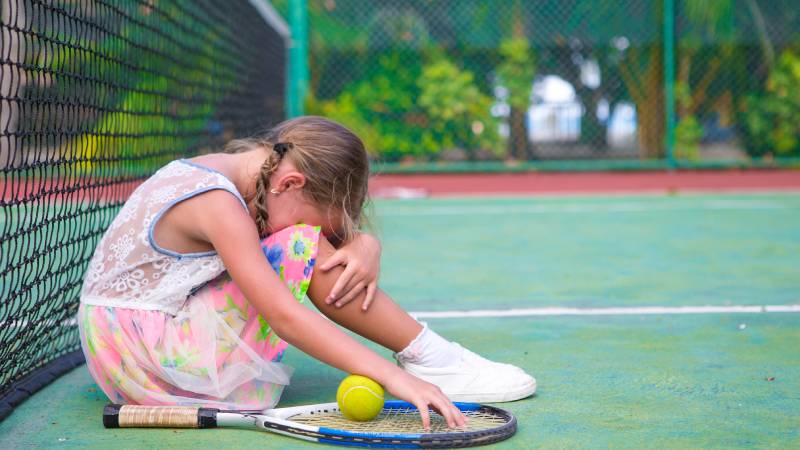Tools and Strategies to combat Bullying

Bullying is a complex issue that affects individuals in many contexts, including school, sports and online. Combating this scourge requires the involvement of all concerned: parents, coaches, schools, and the strategic use of technology. This article explores concrete strategies and tools to combat bullying effectively.
The Role of Parents, Coaches and the School
Bullying, whether verbal, physical or digital, not only affects victims’ self-esteem, but also disrupts team cohesion and sports ethics. Faced with this persistent problem, the role of parents, coaches and schools becomes crucial. These key players have the unique responsibility and power to create a safe, supportive and inclusive sporting environment.
The role of parents
Parents play a crucial role in preventing bullying. It is essential that they establish open communication with their children, encouraging them to share their experiences.
They need to be alert to signs of distress and reinforce their child’s self-esteem through encouragement and support. Active involvement in their children’s school and extra-curricular life also enables parents to detect any suspicious behavioral changes.
The Role of Coaches
In sports, coaches need to promote a positive and inclusive team environment, where bullying has no place. They should implement training sessions on mutual respect and team spirit, and establish clear rules against bullying. Coaches must be vigilant and intervene immediately in the event of inappropriate behavior, while offering support to victims.
Here are some concrete examples of how coaches can promote a positive, inclusive team environment and intervene in cases of bullying:
- Training sessions on mutual respect: Coaches can organize training sessions where they openly discuss with athletes the importance of mutual respect, tolerance and inclusion within the team. They can use concrete examples to illustrate these concepts and encourage open and constructive discussions.
- Immediate intervention in the event of inappropriate behavior: When a coach observes intimidating behavior, he or she must intervene immediately and appropriately. This may involve taking the person responsible aside to discuss the behavior, implementing appropriate consequences, or reporting the incident to the appropriate authorities if necessary.
- Victim support: Coaches should offer immediate support to victims of bullying. This may take the form of listening attentively, offering advice and resources to deal with the situation, and putting in place protective measures if necessary to ensure the victim’s safety and well-being within the team.
The role of schools
Schools must adopt zero-tolerance policies towards bullying. Educational programs on empathy and respect, as well as workshops to develop students’ social skills, are essential. Schools must also provide resources such as school counselors or psychologists to help students affected by bullying.
Using Technology to Detect and Respond to Cyberbullying
With cyberbullying on the rise, technologies offer valuable tools for detection and intervention. In particular, parental monitoring applications can help monitor online activities and social interactions, while respecting children’s privacy. In addition, education on the safe use of the Internet and social networks is crucial to preventing cyberbullying.
Thanks to technological advances, there are now sophisticated tools and applications designed to monitor, report and counter cyberbullying. Here’s how these technologies can be put to work, illustrated by real-life examples.
The Rule of Two
The Rule of Two is a safeguarding principle in the sporting environment designed to protect athletes, particularly minors, from abuse and bullying. This rule states that no coach or staff member should be alone with a minor athlete in a potentially vulnerable situation, whether during training, competition, or travel [1]. The idea is to always have at least two responsible adults present during interactions with young athletes, in order to create a safer environment for all participants.
Tools to prevent Cyberbullying
The use of tools such as MonClubSportif facilitates the creation of a clear and controlled digital space, ensuring that all communications take place under the supervision of a responsible adult. This digitized version of the Rule of Two plays an essential role in preserving the safety and integrity of students in all aspects of their sporting activity.
Intervention and support strategies
In the competitive world of sport, where the pressure to perform is constant, bullying can unfortunately infiltrate, altering not only team spirit but also the individual development of athletes. To combat this scourge, it is crucial to put in place effective intervention and support strategies that take into account both the complexity of the phenomenon and the diversity of victims’ needs. These strategies must be adaptive, capable of responding to cases of cyberbullying as well as verbal or physical intimidation, which are often more visible in a sporting context.
The aim is twofold: to offer immediate, tailored support to victims, while working on long-term prevention and awareness-raising to eradicate the roots of bullying. With this in mind, a multidisciplinary approach involving coaches, parents, sports psychologists and the athletes themselves is essential to creating a healthy, inclusive and respectful sporting environment.
Active Listening
A child who is bullied at school may feel isolated and misunderstood. A school counselor using the active listening technique could invite the child to share his or her experiences in a safe environment [2]. For example, after listening carefully, the counselor might reflect the child’s feelings by saying, “It sounds like these experiences have made you feel very lonely and sad.” This validation can encourage the child to open up more and explore solutions.
Holistic approach
Imagine a teenage girl who is being cyberbullied. A holistic approach would involve collaboration between parents, the school, and possibly a psychologist. Together, they could develop a plan that includes psychological counseling for the victim, digital citizenship training for students, and follow-up with parents on online safety measures at home.
Positive reinforcement
Consider a young soccer player intimidated by his teammates because of his perceived inferior performance. A coach can apply positive reinforcement strategies by celebrating the athlete’s small victories and progress, not only in sport but in all activities. For example, the coach could appoint him captain for a match, thus enhancing his leadership qualities and boosting his self-confidence.
Mediation and Redress
In cases where a student has been bullied because of misunderstandings, a mediation session supervised by a conflict resolution specialist can be organized. During this session, the bully and the victim have the opportunity to express themselves in a controlled setting and work towards mutual understanding. An agreement could be reached where the bully commits to restorative actions, such as working together on a class project or participating in a community service activity, thus fostering reconciliation and empathy.
Sources :
[1] Canada Soccer. Lignes directrices de la règle de deux (Canada Soccer). Consulté à l’URL suivante : https://canadasoccer.com/wp-content/uploads/2020/12/CanadaSoccer_RuleOfTwo_FR.pdf
[2] Créasouces. Outils et stratégies clés pour contrer l’intimidation en milieu scolaire. Consulté à l’URL suivante : https://blog.creasources.ca/outils-et-strategies-cles-pour-contrer-lintimidation-en-milieu-scolaire/
Karl Demers

Sur le même sujet
Bullying in sport is an issue that can seriously affect the well-being and performance of young athletes.
This article sets out to deconstruct the phenomenon of bullying in sport, exploring definitions, underlying reasons and consequences.
Cyberbullying is a growing problem in the world of sport, affecting not only athletes, but sports teams and organizations as a whole.


